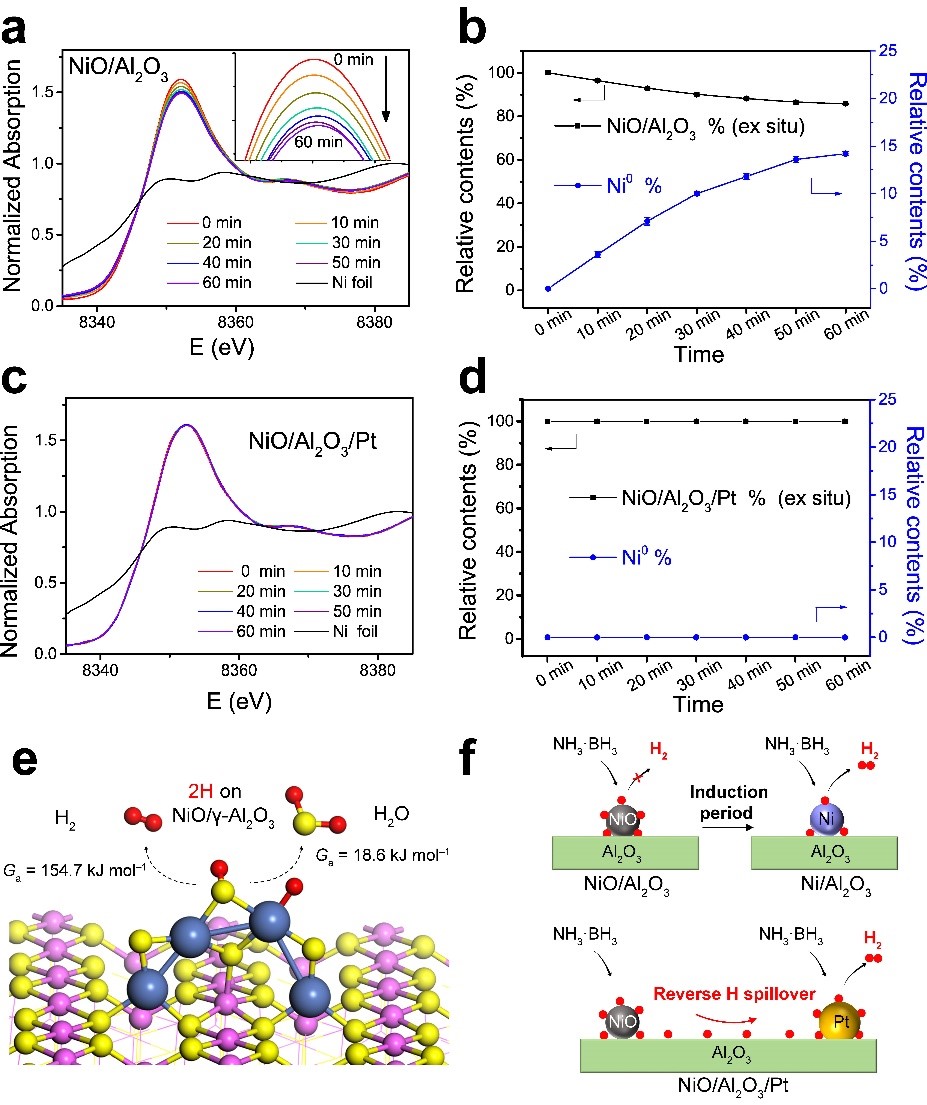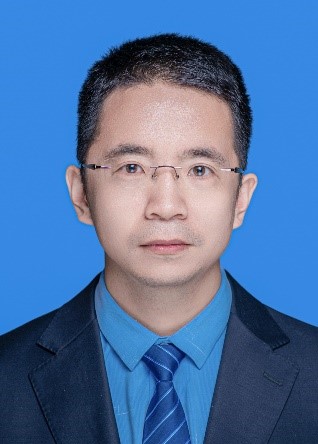This work entitled “Enhanced hydrogen generation by reverse spillover effects over bicomponent catalysts” was published in the Nature Communications on 10 January 2022.
The contribution of the reverse spillover effect to hydrogen generation reactions is still controversial. Herein, the promotion functions for reverse spillover in the ammonia borane hydrolysis reaction are proven by constructing a spatially separated NiO/Al2O3/Pt bicomponent catalyst via atomic layer deposition and performing in situ quick X-ray absorption near-edge structure (XANES) characterization. For the NiO/Al2O3/Pt catalyst, NiO and Pt nanoparticles are attached to the outer and inner surfaces of Al2O3 nanotubes, respectively. In situ XANES results reveal that for ammonia borane hydrolysis, the H species generated at NiO sites spill across the support to the Pt sites reversely. The reverse spillover effects account for enhanced H2 generation rates for NiO/Al2O3/Pt. For the CoOx/Al2O3/Pt and NiO/TiO2/Pt catalysts, reverse spillover effects are also confirmed. We believe that an in-depth understanding of the reverse effects will be helpful to clarify the catalytic mechanisms and provide a guide for designing highly efficient catalysts for hydrogen generation reactions.
This work was supported by the National Natural Science Foundation of China (21773282, U1932131, and U1832208), National Science Fund for Distinguished Young Scholars (21825204), the National Key R&D Programme of China (2017YFA0700101 and 2020YFA0210902), and Youth Innovation Promotion Association of the Chinese Academy of Sciences (2018208).

Figure 1. In situ XANES spectra for the catalysts and proposed mechanisms.
About the author:

Prof. Zhe Gao works in the State Key Laboratory of Coal Conversion, Institute of Coal Chemistry, Chinese Academy of Sciences. His current research interest is focused on the synthesis of nanostructured materials by atomic layer deposition and their applications in heterogeneous catalysis. Until now, he has about 50 peer-reviewed papers published in international journals such as Nat. Commun., Acc. Chem. Res., Angew. Chem. Int. Ed., ACS Catal., Appl. Catal. B: Environ., and so on.
Contact:
Email: gaozhe@sxicc.ac.cn

Prof. Yong Qin works in the State Key Laboratory of Coal Conversion, Institute of Coal Chemistry, Chinese Academy of Sciences. His current research interest is focused on the atomic layer deposition technology and its application in heterogeneous catalysis. Until now, he has published about 160 papers in international journals such as Acc. Chem. Res., Nat. Commun., Angew. Chem. Int. Ed., ACS Nano, and so on.
Contact:
Email: qinyong@sxicc.ac.cn
© Institute of Coal Chemistry, Chinese Academy of Sciences, All Rights Reserved
Address: 27 South Taoyuan Road, Taiyuan, Shanxi, P.R.China
Tel: (86)351-4041627 Email: sxicc_en@sxicc.ac.cn